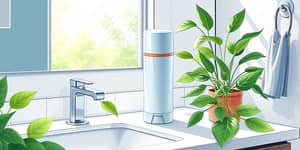Every day we reach for that familiar sellotape-thin film, ready to seal in freshness. Yet the environmental cost of single-use plastic grows heavier with each roll. It’s time to rethink our kitchen habits and embrace an alternative that offers both functionality and sustainability: beeswax wraps.
In this guide, you’ll discover how easy it is to transform your food storage routine, reduce waste, and enjoy long-term savings on household costs—all while nurturing a healthier planet.
What Makes Beeswax Wraps Work?
Beeswax wraps are crafted from organic cotton cloth infused with a blend of beeswax, tree resin, and jojoba oil. When warmed slightly by the heat of your hands, the wrap becomes flexible, moldable, and naturally adhesive, clinging securely around bowls, plates, and produce.
Key components:
- Organic cotton base, chosen for breathability.
- Beeswax coating for gentle stickiness.
- Tree resin to enhance tack and durability.
- Jojoba oil providing antimicrobial benefits.
Food Freshness: Beeswax vs. Plastic
The way beeswax wraps and plastic wrap preserve food differs fundamentally in approach:
Studies show beeswax wraps extend the shelf life of produce by regulating moisture and preventing bacterial growth, whereas plastic wrap can trap excess humidity, leading to faster spoilage of fruits and vegetables.
Environmental Stakes: From Wasteful to Wonderful
Plastic wrap is derived from petroleum and can take hundreds of years to break down. In contrast, beeswax wraps are crafted from renewable resources and will completely biodegrade and compost at the end of their useful life.
- Non-biodegradable plastic contributes to landfill and ocean pollution.
- Beeswax wraps break down naturally in soil, enriching it.
- Each household can cut 6–8 plastic wrap rolls per year.
By switching, you not only reduce single-use plastic waste, but you also support sustainable agricultural practices that nourish bees and cotton growers alike.
Cost and Savings: Busting the “Too Expensive” Myth
Many shy away from beeswax wraps due to perceived higher upfront costs. In reality, a set of wraps priced between $13 and $18 can last up to one year, replacing an average annual spend of $26.52 on plastic rolls.
That’s a net saving of $8–$14 per household annually—plus the intangible value of aligning your purchases with eco-friendly values.
User Experience: Real Voices from the Kitchen
Home cooks and zero-waste enthusiasts report delight at the light honey aroma and easy handling of beeswax wraps. Many appreciate the ritual of warming a wrap between fingertips to achieve the perfect seal.
Some users have discovered creative secondary uses—sealing snack bars, wrapping cheese blocks, or capping mason jars—making beeswax wraps a versatile tool for any sustainable kitchen.
Limitations: When Beeswax Wraps Aren’t Ideal
No solution is perfect. Beeswax wraps do have constraints:
1. Not suitable for liquids or very moist foods, as they aren’t fully waterproof.
2. Should not be used in microwaves or dishwashers: heat above 120°F can melt the wax layer.
3. Over time and repeated washing in cold water, the wax coating will thin, reducing its efficacy.
These limitations are minor trade-offs when weighed against the environmental benefits and ease of use for most dry or solid items.
Getting Started: Tips for Embracing Your New Wraps
- Wash wraps in cool water with mild soap; air-dry flat.
- Replenish worn wraps with a DIY wax refresh kit.
- Store wraps away from high heat and direct sunlight.
- Use different sizes to cover bowls, half fruits, and snack bars.
With minimal care, a single beeswax wrap can serve you for months, making the initial investment truly worthwhile.
Brands and Certifications: What to Look For
When shopping, verify that the cotton is certified organic and that the beeswax is ethically sourced. Look for third-party eco-certifications such as B Corp or OEKO-TEX to ensure transparent, sustainable supply chains.
Avoid wraps with synthetic additives or non-stick coatings that could compromise food safety and biodegradability.
Conclusion: Why This Swap Matters More Than Ever
Every plastic wrapper you forgo is one less microplastic fragment polluting our oceans and soils. By choosing beeswax wraps, you join a global movement toward low-waste living and send a powerful message to producers and retailers that sustainable alternatives are in demand.
Make the switch today, and let each wrap be a small yet significant act of stewardship for the planet—and for generations to come.
References
- https://www.shorproducts.com/post/beeswax-wraps-vs-plastic-wrap-how-does-it-compare
- https://ucanr.edu/blog/preservation-notes-san-joaquin-master-food-preservers/article/beeswax-food-wraps-possible
- https://abeego.com/en-us/blogs/kfa/beeswax-vs-plastic-wrap
- https://www.naturebeewraps.ca/blogs/whats-buzzin/plastic-wrap-vs-beeswax-wraps-making-sustainable-choices
- https://www.thereducereport.com/home/2020/2/19/beeswax-food-wraps-review-2020
- https://honeybeewrap.com.au/blogs/news/why-beeswax-wraps-are-good-for-the-environment
- https://www.sciencebuddies.org/science-fair-projects/project-ideas/EnvSci_p071/green-chemistry/beeswax-as-plastic-alternative
- https://ideaexchange.uakron.edu/honors_research_projects/1697/










